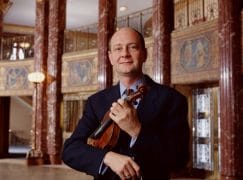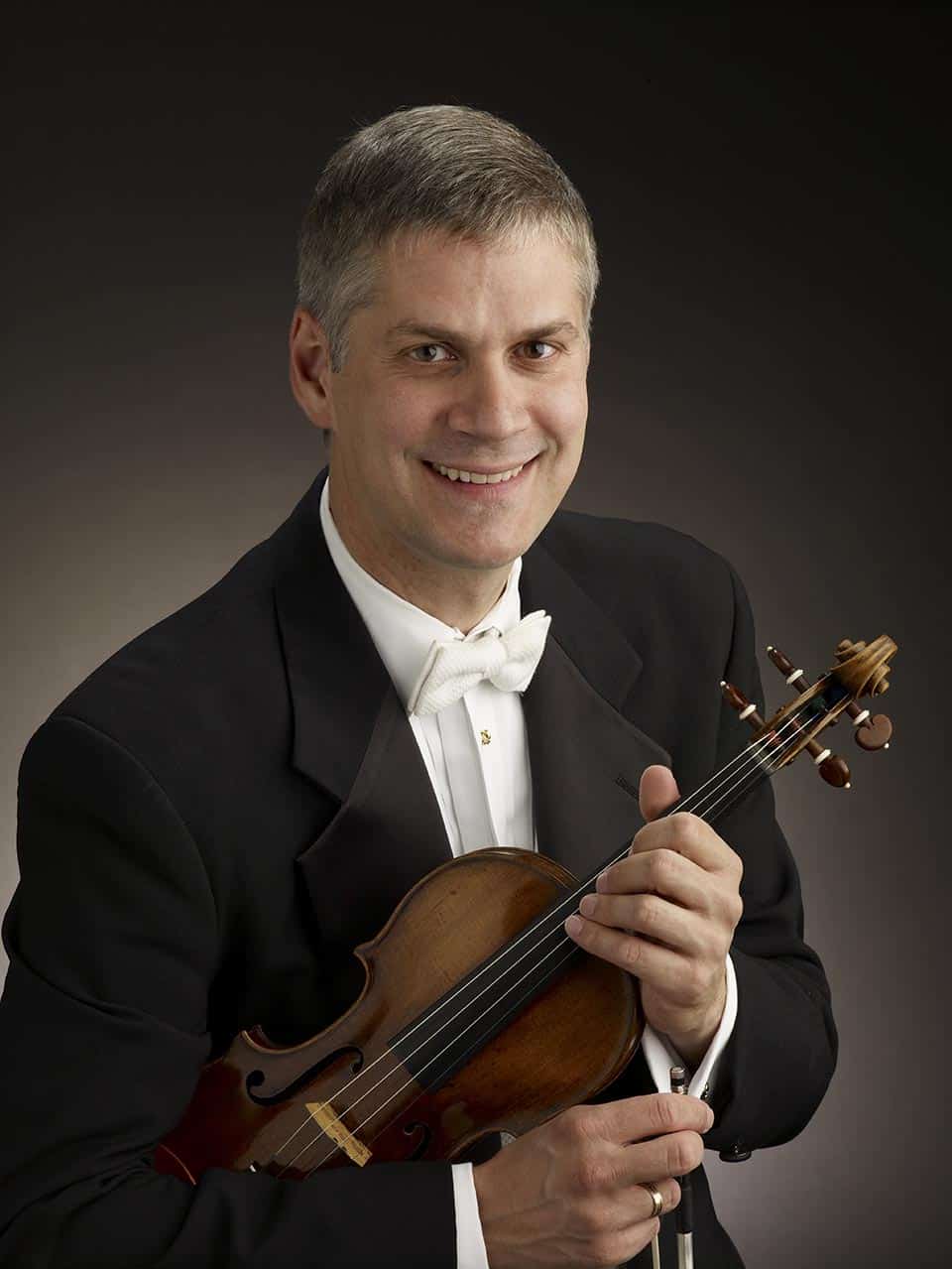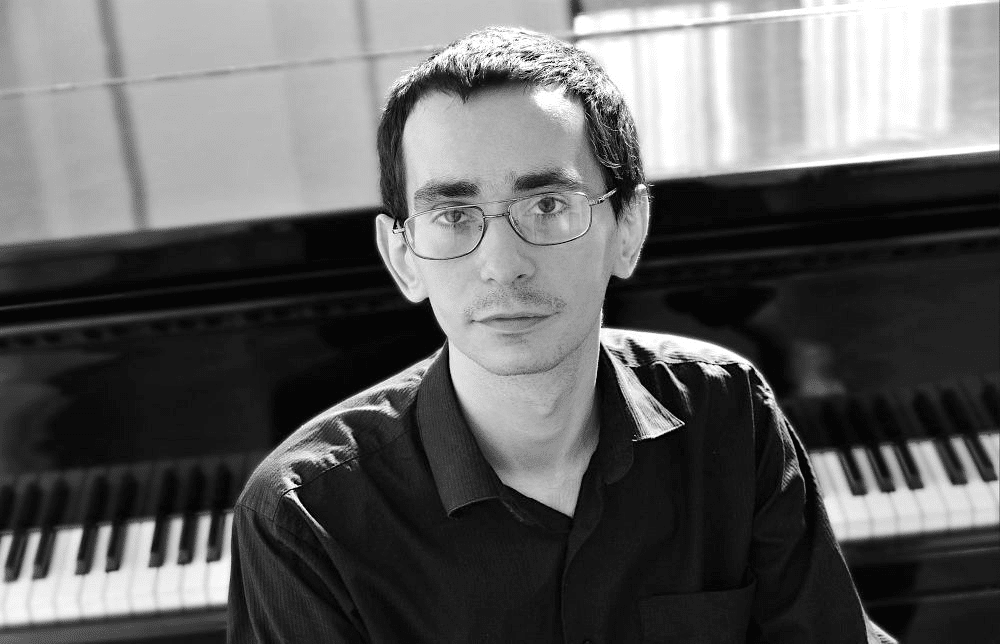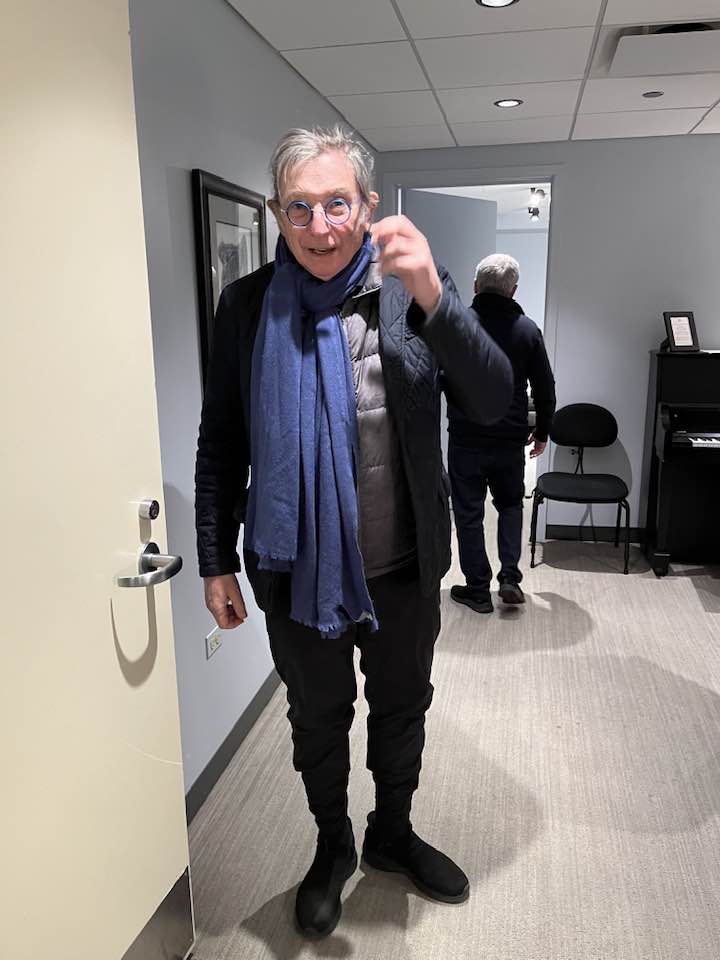Who’s paying top $ for a concertmaster?
mainIt makes come as a surprise that the highest paid conertmaster in America sits in Cleveland, but then William Preucil has been doing the job since before most of us were born.

What’s really surprising is that New York Philharmonic’s Frank Huang doesn’t make the top ten.
Here’s Drew McManus’s due diligence of concermasters for the accounting year 2015/16:
Cleveland Orchestra $621,510
San Francisco Symphony $583,990
Chicago Symphony $539,900
Los Angeles Philharmonic $529,722
Boston Symphony $449,527
Philadelphia Orchestra $428,372
National Symphony $409,148
Baltimore Symphony $322,328
Dallas Symphony $293,027
Cincinnati Symphony $292,797
See also:
Two maestros now earn $3 million
Who’s America’s top-paid orchestral exec
Covent Garden’s Pappano is seriously underpaid
and





There’s no way Frank Huang makes less than $300k a year.
The 990 tax form available on Guidestar for 2016 usually reflects the figures from the previous completed year (2014-15). Frank Huang joined the NYPhil in Fall of 2015. It’s possible that his full salary is not reflected in the report for 2015-16 form 990. I’m sure he didn’t take a pay cut from his previous salary in Houston.
Good point… I wasn’t sure of the dates. Dicterow was certainly making over half a mill when he retired.
One of the reasons the salaries are so high is that American cities are one one-horse orchestral towns. In Europe, major cities often have from 5 to 8 full time orchestras, while in the states there is only one. The only excpetion is NYC which has two — and even that is a very small number given the city’s population in comparison to Europe. If NYC had an orchestral landscape similar that of Paris or Berlin, it would have about 16 full time orchestras. Even by London’s standards, it would have 5 or 6.
This lack of orchestras places an inordinate focus and prestige on the few top ensembles that exist. One result, of course, is the over-inflated egos among some of the star players, which results in bad behavior. I can’t vouch for the veracity of the article linked below, but the description of the allegedly appalling behavior of the concert master in Cleveland, William Pruecil, the highest paid concert master in the States (and probably the world) would be a reflection of how this one-horse provincialism manifests itself.
https://www.clevescene.com/cleveland/sour-notes/Content?oid=1497679
We might also consider how a city like Miami shut down its resident full time professional orchestra after contract disputes, and then created a long-term residency program for the Cleveland Orchestra to take its place. Cleveland thus seems to have become a kind of scab orchestra. (See the wiki article about the Florida Philharmonic about the alleged details which are quite appalling.)
We thus see a movement in the USA to go even farther than just one-horse orchestral towns, to one orchestra serving multiple cities. Fortunately, the long-term Cleveland residency in Miami, and its poaching of the Florida Philharmonic’s donor base, seems to be faltering. Hopefully the patrons of Miami will take enough pride in their community, and enough respect for the city’s citizens, to revive the Florida Philharmonic. They would not have to pay the ridiculous salaries exemplified above. Excellent musicians can be obtained with average middle class salaries. The point is to support the arts, not to create cultural country clubs for the wealthy.
I think it’s also important to place this situation in the larger social context of how Cleveland and many other cities in the region became decimated, white flight, rustbelt backwaters. The organization Seeds of Literacy found that 66% of the people in Cleveland are functionally illiterate, which is in large part a manifestation of America’s racial class system and the debilitating effects it has on people and cities. These problems were massively compounded by the economic policies that created the Rustbelt.
We see how interconnected the results of social neglect are, and how a lack of support for the arts becomes only one manifestation of the problems. And we see how these conditions led to the election of Donald Trump. Layer after layer of problems arise to the point that no one can any longer see a way out. One wonders how our arts organizations might help solve these problems, and yet they are among the most politically passive in our society. Such a contrast to the idea that artists are social firebrands — at least in classcial music.
William,
While I share your view of the big picture, I believe you go too far in calling orchestras “politically passive”. US orchestras big and small have community programs. They help, though obviously home and school matter infinitely more – I see that as a parent every day. Moreover, orchestral players are very often active as educators in their communities. Rhode Island, where I live, has a very respectable part-time orchestra, the RI Philharmonic, whose merger with the local music school has created many synergies. I don’t know how typical this case is, but I definitely see them as a major force of good for music and the local society.
Yes, they’re doing a good job with educational and outreach programs — at least to the degree that their small budgets allow — but that’s more educational than political. I’m speaking about arts organizations taking political stances on issues that directly affect them like arts funding. Their silence on such topics is deafening.
Sometimes it’s a balancing act between expressing your institutional opinion vs. alienating your politically conservative donors. I’ve had it expressed to me privately that, while taking an explicit political stance on legislation might not make things better for the orchestra, offending big donors could make things significantly worse.
RE your second paragraph: I don’t see the logical connection between the number of orchestras in a town and the behavior of star musicians. Another problem is the size of your data set; lets see, CO…maybe NY Phil thats two problems out of how many orchestras? Or do you want to assume, there are similar problems in every primary orchestra in a US city – just unreported. That is the kind of assumptions typically made by those who do not use fact-based reasoning. My points is that you are making wild claims based on nothing to support an illogically based premise. Give it up, man.
The logical connection is the inflated status star players obtain when orchestras become a rarity and they are the only show in town. The difference is empirically observable in Europe where multiple orchestras in large cities create a very different professional atmosphere. Not only are there five to eight times as many orchestras, the solo positions are all shared by co-principles in the EU as opposed to only one player in the solo position in the States. A big difference is created when there are 10 to 16 solo flutists or concert masters in town instead of just one. It’s not rocket science. Think about it.
I missed one of your points. People in the field know that bad behavior among some star players is common enough to be a concern. I won’t mention names but there are or have been recent examples in several of our top orchestras. It’s a known problem, often kept discretely quiet. Another example would be the number of reports on SD about abuse. The problem is real, and compounded by our propensity to inflate the status of top orchestral musicians.
If there is a weakness in my argument, it’s that these problems also exist in Europe even with the larger number of players per city. Without concrete numbers, it’s difficult to make comparisons or analyze causes.
Any time any city wants to subsidize one or more competing orchestras, they’re perfectly welcome to do so. Nothing and no one is stopping them.
That’s not true. Since the Second World War our political system has been so purged that there is no political representation for public arts support. HUAC, the Truman Loyalty Acts, the CIA’s covert program called the Congress for Cultural Freedom that used to manipulate the American arts world, gerrymandering, and numerous other factors contributed to American’s not being offered a choice about social programs that are commonplace in every other developed country in the world. If and when public arts funding is offered as a political choice, then we will see how Americans decide.
………….hopefully they won’t be given that choice – en masse – look who they just elected President (yes, I know he didn’t win the popular vote)………….you think they’d vote for public funding for the arts? There’s a wonderful Youtube video of Fred Rogers (as in “Mr Rogers”) testifying before a congressional committee about this. The argument hasn’t changed on each side since, but Fred does a wonderful job and at least his inquisitor is somewhat openminded, a quality severely lacking in Congress today………..
https://www.youtube.com/watch?v=yXEuEUQIP3Q
It will take a lot of work and a lot of time to bring our political system back to health. And no one’s sure what can even be done.
Oh, ho! I see. So, the problem with the Left in the US is that it isn’t insane enough. Thanks for the warning.
Well most of the larger metropolitan areas have regional orchestras, typically based in the suburbs. So there might be one major orchestra downtown, and the regional orchestra may have a much smaller budget and fewer concerts – but many are fully professional, and to many people’s ears the difference in quality is minor.
NYC does have a number of smaller-scale orchestras besides the NY Phil and the Met Orchestra. There’s the Orchestra of St. Luke’s, Orpheus, the American Symphony Orchestra, American Composers Orchestra and Ensemble LPR. Plus, the New Jersey Symphony is just across the Hudson. Granted, those aren’t all full-time groups, but I wonder how they compare to those in a city like Berlin or Paris.
I would say they do not compare so favorably in spite of noble efforts. When ensembles work together full time, it builds quality that part time groups can’t achieve. The musicians are also better able to focus.
I agree – and some of us do hear that difference. Either they don’t play enough together or there’s too much subbing. It’s not enough in the masterpieces to just play the right note at the right dynamic with something close to the right tone color. It can be more specific, with more interesting colors.
It sort of boils down to the quality of the conductors – because if the conductor doesn’t know what they’re doing, the orchestra can’t cover it up as well… And if the conductor is really good, the orchestra will rise to the occasion.
Dear Mr. lebrecht,
I am constantly reading Your News!
I would be really interested in an article, regarding the payment of violinists in various Orchestras. Could You make an article about different big Citys Orchestra around the whole world and write, how much a concertmaster and a normal Violinist earns?
I would be really curious to see how much the concertmaster of Vienna Symphony Orchestra is paid, or how much at an asian Orchestra etc.
All the best
Yes I am interested in other countries as well. I live near Ottawa and attend concerts on a regular basis. I know that the National Arts Center Orchestra has some fine first chair players. What kind of salaries do they make? I also take in concerts each year in Montreal.
God help us when LeBron picks up a baton!!
These guys (musicians)are worth every penny!!
Aside from Izhak Perlman, I bet no other solo violinist alive has a lifetime earning (health care, retirement, included) that equals that of a top 10 concertmaster.
Maybe Joshua Bell.
There probably are others, but it is a fair point that being a concertmaster of a major orchestra is often a better deal, financially, than being a soloist. Especially if the travel, etc., lose their charm. And a lot of those concertmasters are fabulous violinists, every bit as good as name-brand soloists. So I’m not sure this is a bad thing.
Probably Mutter and possibly Kremer.
The internet has Ray Chen at 10 million, Hilary Hahn at 9 million. So, soloists, even young ones, are doing pretty well.
Ray Chen’s violin is supposedly worth $10 million. I’d be surprised if he is. Though apparently he’s bigger than I realized, the internet calling him a “superstar.”
These concertmaster salaries are of course exorbitant. They are much higher than at comparable european orchestras. On the other hand, concertmasters at american orchestras play many more services than their counterparts in Europe where the work is split 50/50 among two coprincipals. At a european orchestra, a concertmaster probably only works about 20 weeks a year, and has more time to play at other orchestras, teach, do chamber music, etc. Moreover, where there is only one concertmaster (America) there is also usually more responsibility and power. The alleged nepotism in Cleveland would be difficult to replicate in Europe since at auditions the whole orchestra, or string section sits in on auditions. Let’s not forget that not only do concertmasters make more in the US, , but the section players of major orchestras do too.
Osborne is off-base in his remarks. The top freelancers in New York are a tight group who can play as well together as any established orchestra. The St. Luke’s and Orpheus players are together all the time, and the free-lancers are skilled at coalescing quickly. What they may not have is the distinctive color an orchestra like the New York Philharmonic has.
It is interesting to see the gap between concertmasters and new hires. But this doesn’t include their additional free-lancing and teaching income.
Wow, given the big time rock star money in professional music, it is no wonder that so many kids fill the halls of major conservatories. Really, the amount of money quoted here is higher than most top doctors, lawyers, just about all IT specialists and engineers, architects, and other professions. While it takes skill and talent to play the violin, it is really hard to say that it does not require comparable skill and talent to cure people of cancer or heart disease or to develop some of the mind boggling computer systems the we see all over the internet. Yet very few doctors and no IT specialists or engineers (except perhaps Bill Gates and other moguls) make the salaries of these conductors and concertmasters.
These are sports star salaries and they seem wildly inappropriate when you read and hear about all of the financial woes that face American orchestras. It is not really a matter of deserving the money — heck almost everyone thinks they are worth more than they get paid. It is a matter of supply and demand. The number of quality players who can handle concert master positions in large orchestras is large. Go to any conservatory and listen to some of the whiz kids who study there and I promise you will be amazed. The number of players who are qualified to play in major orchestras is huge — there are tens of thousands of music graduates who are fully capable of playing at the professional level but are simply unable to win first place in a “winner takes all” audition. Many of these people are forced out of the music profession.
In Europe, it sounds like the salaries are lower but more people can participate in the profession even though the top salaries are lower. That is a system that makes better sense. Even though playing the violin at the top level is difficult and the instruments are expensive (although not that expensive — a top modern American maker typical constructs a violin for about 50K), these salaries are jaw-dropping. Think of tat the next time the local professional orchestra says that they do not have enough money to function.